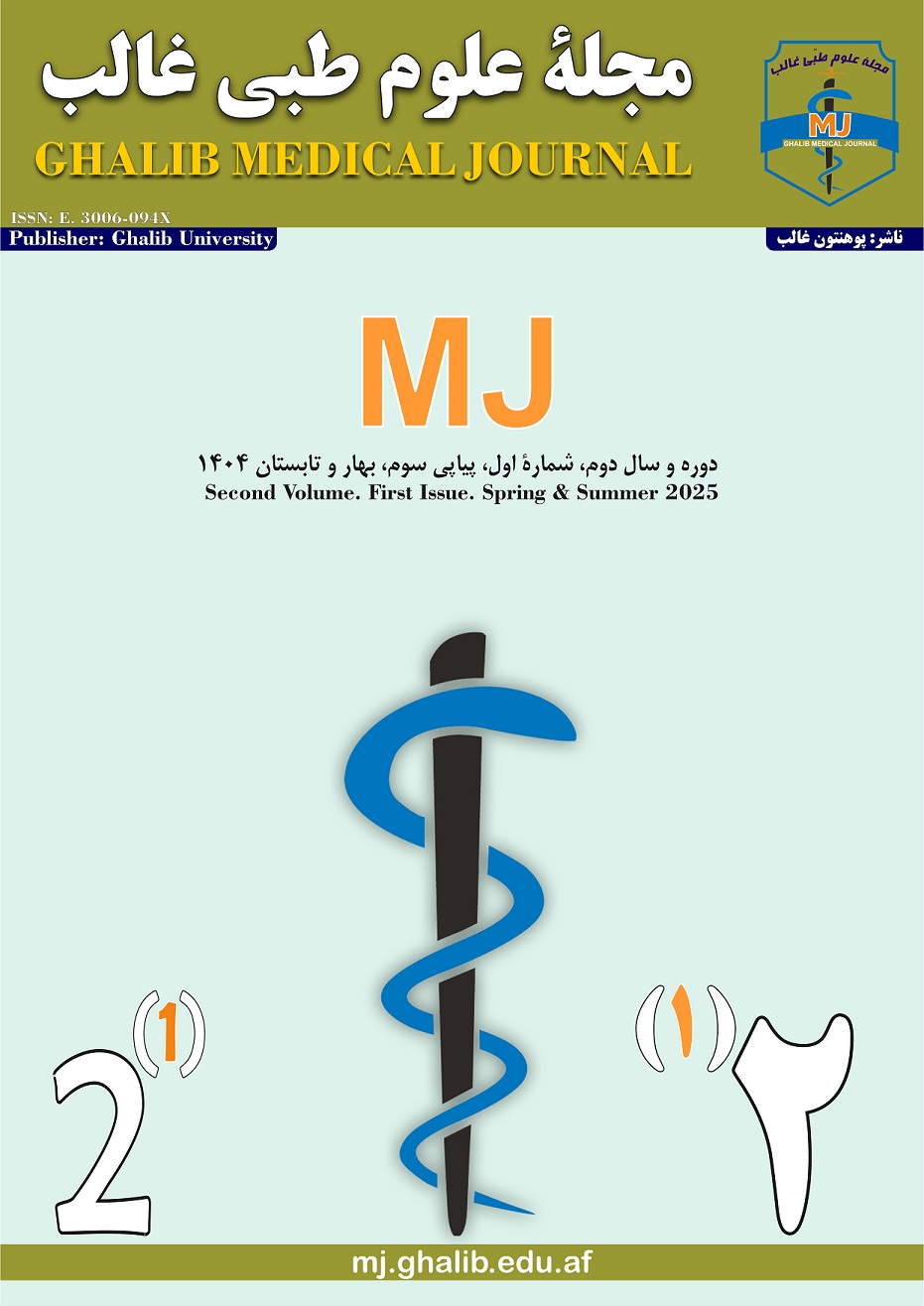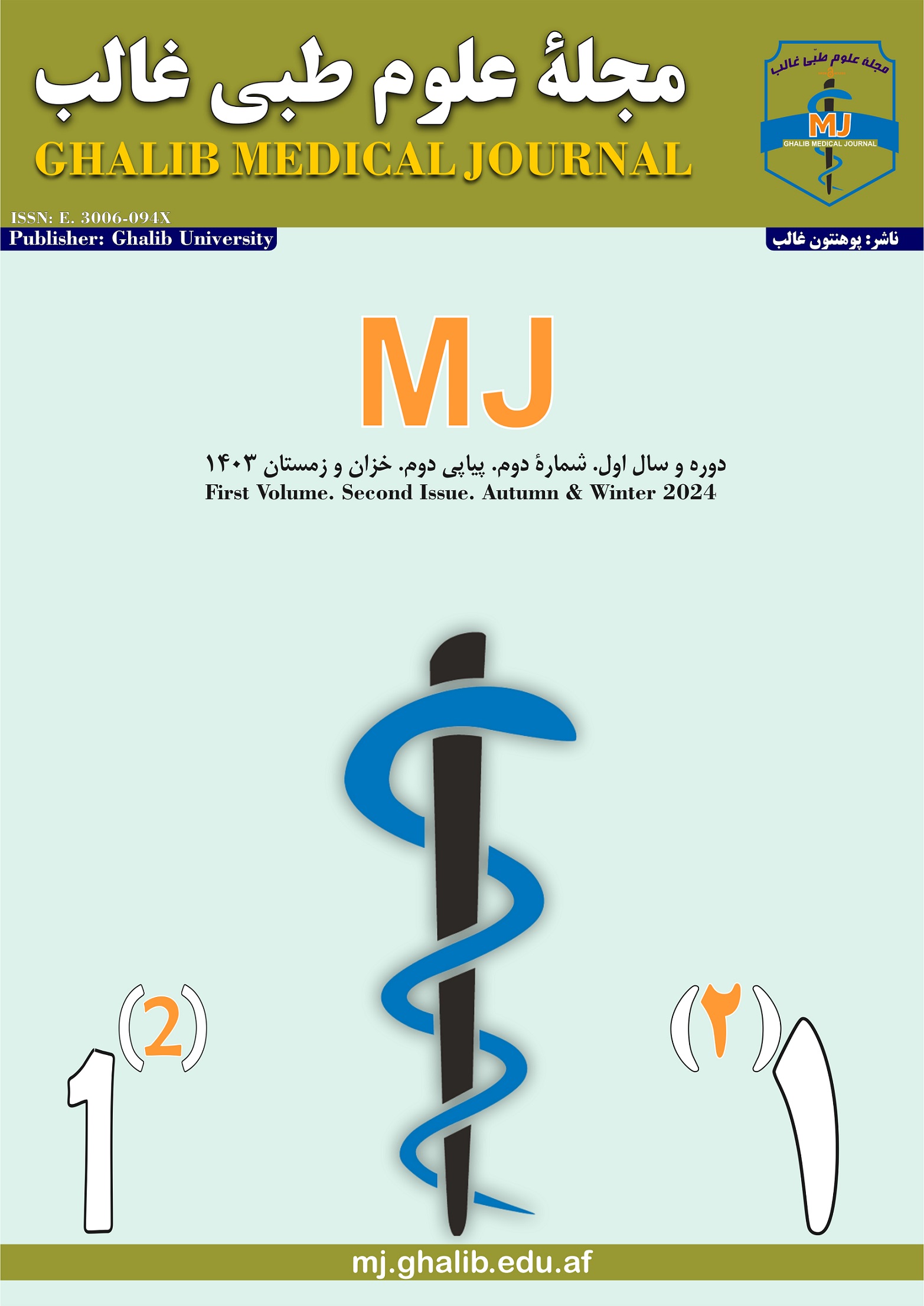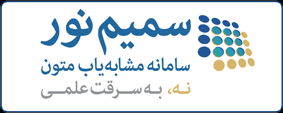Prevalence of temporomandibular joint disorders among patients visiting the kabul national specialized stomatology hospital in 2021
DOI:
https://doi.org/10.58342/ghalibMj.V.2.I.1.7Keywords:
temporomandibular, joint, disorders, myofascial, osteoarthritisAbstract
Background: Temporomandibular joint disorders are one of the most common disorders in the craniofacial region. Prevalence of T.M.D. varies in different reports. Its symptoms are chronic and alter the life quality of individuals with T.M.D. Differential diagnosis of T.M.D. is challenging and important.
Understanding the prevalence of T.M.D. at stomatology hospital helps us in the prevention and treatment of this group of disorders.
Methods: Descriptive study was our research methodology. We used the case series type to study the frequency and pattern of T.M.D. cases among O.P.D. service patients of stomatology hospital during the year 2020. We studied T.M.D. cases in patients between 10-70 years old. Our variables were age, gender, site, and type in patients with temporomandibular joint disorders.
Results: Of the total patients who visited the stomatology hospital, 306 patients had T.M.D. signs and symptoms.in these cases, gender distribution was 52.9% male and 47.1% female. T.M.D. was more prevalent in the age category of 10-30 years old, which includes 66.7% of all cases. The prevalence of T.M.D. in the age categories of 30-50 years old and 50-70 years old was 24.1% and 8.82%, respectively.
The most common type of T.M.D. was myofascial pain (40.8%). Disc displacement and osteoarthritis occurred in 33%, and 25.2%, respectively.
Conclusions: This study highlights the high prevalence of temporomandibular joint disorders (T.M.D.) among patients at the stomatology hospital, particularly in individuals aged 10 to 30 years. With a slight male predominance, the most common type of T.M.D. identified was myofascial pain. These results underscore the need for early diagnosis and targeted treatment to improve the quality of life for those affected. Overall, understanding the frequency and nature of T.M.D. cases can guide effective prevention and management strategies in clinical practice.
References
List, T., & Axelsson, S. (2010). Management of TMD: evidence from systematic reviews and meta-analyses. Journal of oral rehabilitation, 37(6), 430–451. https://doi.org/10.1111/j.1365-2842.2010.02089.x
Ohrbach, R., & Dworkin, S. F. (2016). The Evolution of TMD Diagnosis: Past, Present, Future. Journal of dental research, 95(10), 1093–1101. https://doi.org/10.1177/0022034516653922
Michelotti, A., Alstergren, P., Goulet, J. P., Lobbezoo, F., Ohrbach, R., Peck, C., Schiffman, E., & List, T. (2016). Next steps in development of the diagnostic criteria for temporomandibular disorders (DC/TMD): Recommendations from the International RDC/TMD Consortium Network workshop. Journal of oral rehabilitation, 43(6), 453–467. https://doi.org/10.1111/joor.12378
Okeson, J. P., & de Leeuw, R. (2011). Differential diagnosis of temporomandibular disorders and other orofacial pain disorders. Dental clinics of North America, 55(1), 105–120. https://doi.org/10.1016/j.cden.2010.08.007
Ferreira, C. L., Silva, M. A., & Felício, C. M. (2016). Signs and symptoms of temporomandibular disorders in women and men. CoDAS, 28(1), 17–21. https://doi.org/10.1590/2317-1782/20162014218
Murphy, M. K., MacBarb, R. F., Wong, M. E., & Athanasiou, K. A. (2013). Temporomandibular disorders: a review of etiology, clinical management, and tissue engineering strategies. The International journal of oral & maxillofacial implants, 28(6), e393–e414. https://doi.org/10.11607/jomi.te20
Biondi, M., & Picardi, A. (1993). Temporomandibular joint pain-dysfunction syndrome and bruxism: etiopathogenesis and treatment from a psychosomatic integrative viewpoint. Psychotherapy and psychosomatics, 59(2), 84–98. https://doi.org/10.1159/000288651
Greene, C. S., & Laskin, D. M. (1988). Long-term status of TMJ clicking in patients with myofascial pain and dysfunction. Journal of the American Dental Association (1939), 117(3), 461–465. https://doi.org/10.1016/s0002-8177(88)73018-4
Santos, C. E. M., Rodrigues, V. P., De Oliveira, I. C. V., De Assis, D. S. F. R., De Oliveira, M. M., & Conti, C. F. (2021). Morphological changes in the temporomandibular joints in women with fibromyalgia and myofascial pain: A case series. Cranio : the journal of craniomandibular practice, 39(5), 440–444. https://doi.org/10.1080/08869634.2019.1650215
Chang, C. L., Wang, D. H., Yang, M. C., Hsu, W. E., & Hsu, M. L. (2018). Functional disorders of the temporomandibular joints: Internal derangement of the temporomandibular joint. The Kaohsiung journal of medical sciences, 34(4), 223–230. https://doi.org/10.1016/j.kjms.2018.01.004
Oğütcen-Toller, M., Taşkaya-Yilmaz, N., & Yilmaz, F. (2002). The evaluation of temporomandibular joint disc position in TMJ disorders using MRI. International journal of oral and maxillofacial surgery, 31(6), 603–607. https://doi.org/10.1054/ijom.2002.0321
Wang, X. D., Zhang, J. N., Gan, Y. H., & Zhou, Y. H. (2015). Current understanding of pathogenesis and treatment of TMJ osteoarthritis. Journal of dental research, 94(5), 666–673. https://doi.org/10.1177/0022034515574770
Lu, K., Ma, F., Yi, D., Yu, H., Tong, L., & Chen, D. (2021). Molecular signaling in temporomandibular joint osteoarthritis. Journal of orthopaedic translation, 32, 21–27. https://doi.org/10.1016/j.jot.2021.07.001
Bhateja, S., Sachdeva, A., Arora, G., Khanna, B., & Singh, A. (2020). Prevalence of temporomandibular joint disorders in patients: An institutional-based study. SRM Journal of Research in Dental Sciences, 11(3), 123. https://doi.org/10.4103/srmjrds.srmjrds_28_20
Poveda-Roda, R., Bagan, J. V., Sanchis, J. M., & Carbonell, E. (2012). Temporomandibular disorders. A case-control study. Medicina oral, patologia oral y cirugia bucal, 17(5), e794–e800. https://doi.org/10.4317/medoral.18040
Downloads
Published
How to Cite
Issue
Section
License
Copyright (c) 2025 علی سینا کریمی, هدایت الله احسان, منیر احمد ابراهیم خیل, عبدالوکیل رامکی, عزیر احمد سلیم

This work is licensed under a Creative Commons Attribution 4.0 International License.










